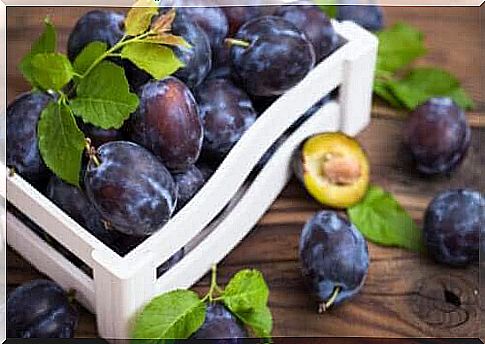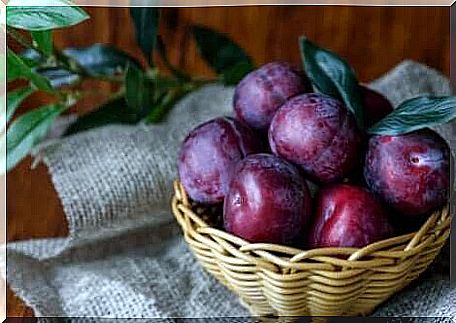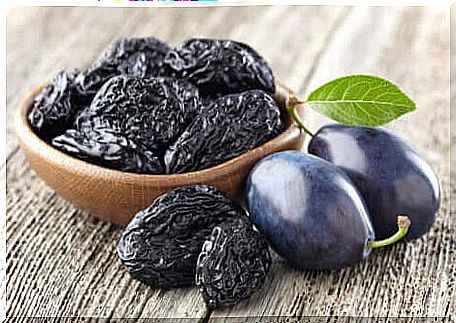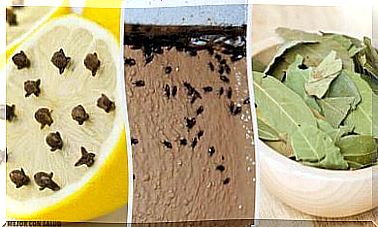Discover The Different Types And Varieties Of Plums

Can you identify all the different types and varieties of plums?
Most people have eaten this fruit at one time or another. However, not everyone knows what the specific differences are between one type and another. With that in mind, this article will tell you more about this topic.
The plum tree
This fruit comes from the plum tree, which is part of the Rosaceae family and belongs to the subgroup Prunus, just like almonds, cherries and peaches.
In general, this tree has a size of about 5 or 6 meters, has a smooth or cracked trunk and, in some species, branches with thorns. In addition, the leaves are elliptical with serrated edges and it has white flowers with buds that are rough to the touch. It is important to point out that it can withstand low temperatures and frost.
The fruits that this tree produces can be yellow, violet, red, white or green. Inside they have a juicy flesh with a firm consistency and a stone – an inedible seed. On the outside, they have a smooth and soft skin. In general, yellow plums stand out for their acidity, those with red or purple tones are sweet and the green ones are bitter.

Types of plums
According to the Sistema Nacional de Vigilancia y Monitoreo de plagas in Argentina, the most well-known varieties are the European and Japanese plums. These in turn present different varieties of plums. However, another form of classification may be by color.
We provide more information below.
European plums ( Prunus domestica )
The European plum tree is the most common. These fruits are usually light green (like the Claudia variety) or purple. They do not contain a significant amount of water, so they are useful for drying.
Of course, you can also eat them as a fruit or use them to make sweets, compotes and jams. They are grown in France, England, Belgium and Spain. Specifically, the variants belonging to this group are Claudia, Stanley, President, Giant and Ana Apath.
Japanese plums (Prunus salicina)
In general, we eat these plums fresh. They have reddish or black skin, although there are also light yellow varieties. They are characteristic of warm climates. Within this type we find the following varieties: Red Beauty, Golden Japan, Menthey, Formosa, Santa Rosa.
Yellow plum
This plum, which is native to the American continent and the West Indies, has many different names. For example, jobo, yellow mombin, hog plum, gully plum, coolie plum, or simply as a mope.
It is small compared to others, has a solid mass and is yellow in color both inside and out. It is used to make desserts, cakes, jams, juices, canned fruits and plum brandy.
The different varieties of plums
As already mentioned, there are different varieties of plums within these types. Below we will give you more information about some of them.
Yellow Sungold plum
These are a number of Japanese plums that come from South Africa, but grow in several countries. It is large and aromatic, has yellow skin and can turn intense red when it reaches maturity.
The mass is yellow or orange and has a remarkable sweetness. You can eat it fresh, although it is also useful for making jams.
Red Beauty plum
This is another variety of Japanese plum that has a rounded shape. The skin has a red color and can become dark, depending on how mature it is. Inside it is yellow and has a hard texture. For this reason, it is useful for handling and transport.
The varieties of plums: Golden Japan plum
This is a light yellow fruit with light and resistant skin. It has juicy pulp and like the previous ones it is also a Japanese variant. It is commonly grown in France, Italy, South Africa and the United States.
Black Amber plum
This fruit has black skin and a round, slightly flat shape. The flesh is yellow and firm. Due to its hardness, it is resistant to handling. In addition, it is adapted to hot areas.
The varieties of plums: The Santa Rosa plum
This plum stands out for its rounded and heart-shaped shape. It has an intense red skin and on the inside it is yellow or light carmine yellow. In addition, the pulp is juicy and has a taste similar to strawberries.
Varieties of plums: Green Queen Claudia plum
Queen Claudia plum is a variety of the European type of plum. It is medium in size and is round. On the outside it is green and has a nice and juicy mass. It is ideal to eat fresh or to prepare compotes and jams with.
Benefits of consuming the different varieties of plums
According to several studies, consumption of plums has beneficial effects on health. This is especially because they provide antioxidants, phytochemicals (a diverse group of compounds found in plants), vitamins and minerals.
To make it clear, all of these varieties of plums, despite having a different taste or color, can contribute to well-being. In this sense, a regular intake of this fruit provides the following benefits:
- Improves the condition of skin and eyesight thanks to its contribution of vitamin A.
- Prevents constipation: Plums improve digestion due to the contribution of dietary fiber and sorbitol, its natural sweetener.
- Relieves fluid retention: The high potassium content promotes the elimination of fluids so that they do not accumulate in the soft tissue. This is beneficial in people with high blood pressure.
- Maintains cholesterol and blood sugar levels : This action is also mediated by fiber, which prevents high fat absorption.
- Strengthens the immune system: This is because plums provide vitamins and minerals that the body needs to function properly when it comes to cell metabolism in white blood cells.

There are different types and varieties of plums for every taste
As you can see, there are many varieties of this fruit, in addition to the typical violet or red. Along with this, the taste, the amount of water and the contribution to nutrients can vary.
Despite this, health experts consider consuming any type or variety of plums as beneficial to your health. The fiber content will regulate the intestines, the minerals will help the immune system, and potassium will contribute to the right blood pressure level.









